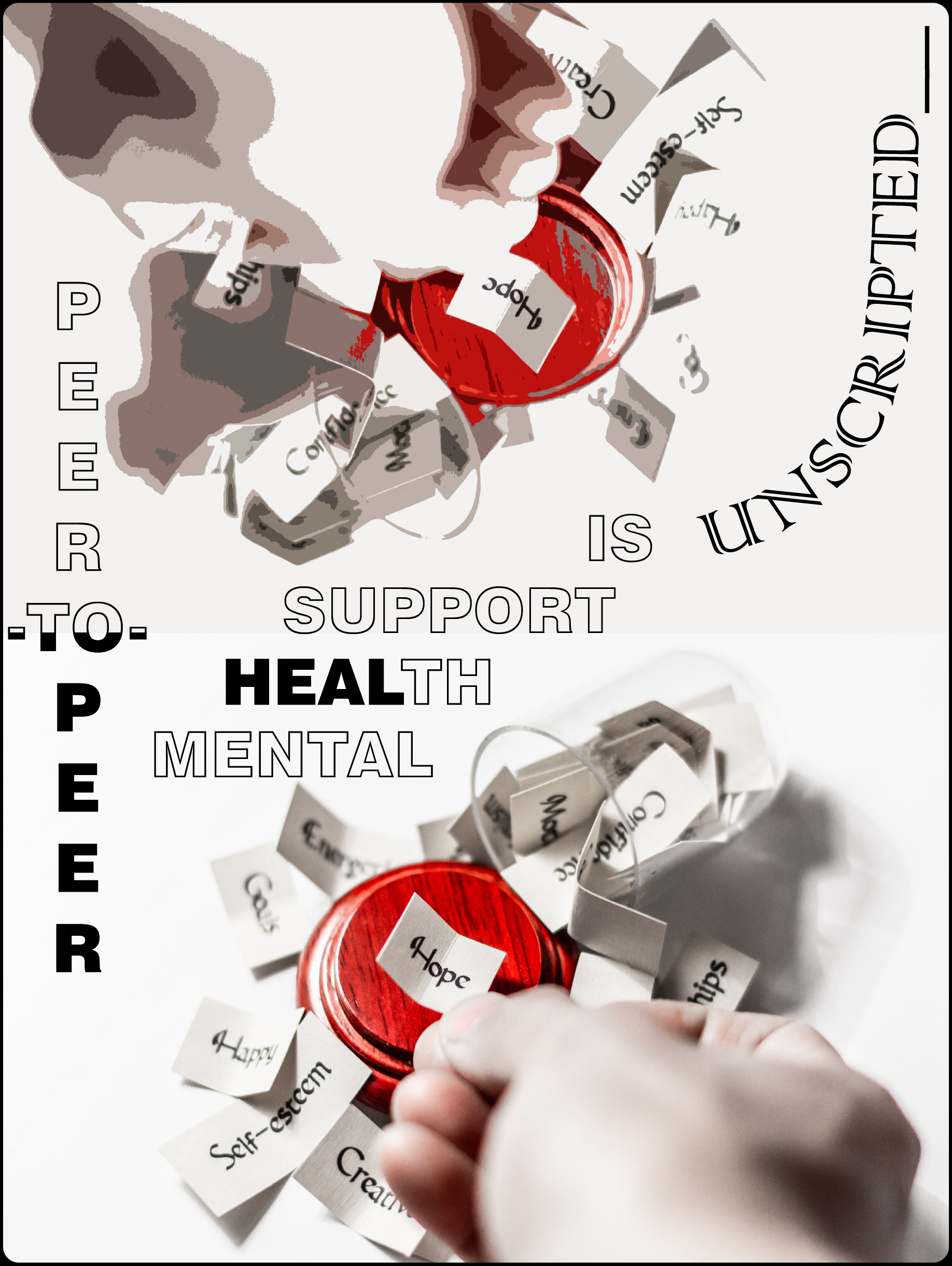Description: This is a visual representation of my research into the benefits of peer-to-peer mental health interventions for high school students, and symbolizes the potentially life-changing roles that peers have in supporting each other through challenging times. My research challenges current mental health initiatives by expressing the need for improving our capacity to identify students that are experiencing mental health challenges. The title was intentionally chosen to further illustrate how changes to mental well-being can come at any time for an individual, oftentimes reducing their capacity to experience the positive things in life. As such, in addition to individual interventions, it is crucial for the presence of peers to provide routes of rediscovering hope during a student’s darkest times. Furthermore, the peer-to-peer supportive relationship is facilitated by those who have overcome past mental health crises (represented by the blurred out photo at the top) is one that should be genuine and does not follow any predetermined scripts. In a world where technology, competition, and social tensions have exacerbated triggers for youth, educators must unite to generate long-lasting improvements to mental health through facilitating peer-to-peer interactions that are authentic, empathetic, and beneficial to both mentors and mentees.
Why did you conduct this research? I conducted this research so that I could become a more responsible educator that can provide practical mental health support to students, with the focus on enabling supportive structures within the community that they can rely on to discover that there is hope during their toughest times. Although teachers may bear the largest responsibilities in ensuring that they approach each student with empathy and culturally appropriate pedagogy, the impact of peers for students is life-long, and can help equip them with help-seeking behaviour and mental resiliency to combat present and future challenges that come their way.
Technique: The photo of the platform with the spilled-over words were taken using a DSLR camera and lightly edited for colour and clarity. The reflection in the top portion has been subjected to a filter in Photoshop, but retains its resemblance to the original photo. The words were inserted using Adobe Illustrator.
Additional information: I believe that my research is also highly relevant to the UofT Student and Staff community because this theme within mental health is adaptable to multiple age groups. Although there are some differences in terms of the type of supports for different ages, the message itself is a motivational one that looks to guide students to reach out to their peers, both for support and as support.

